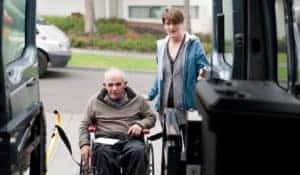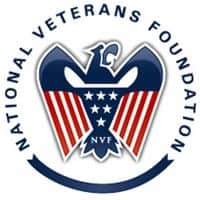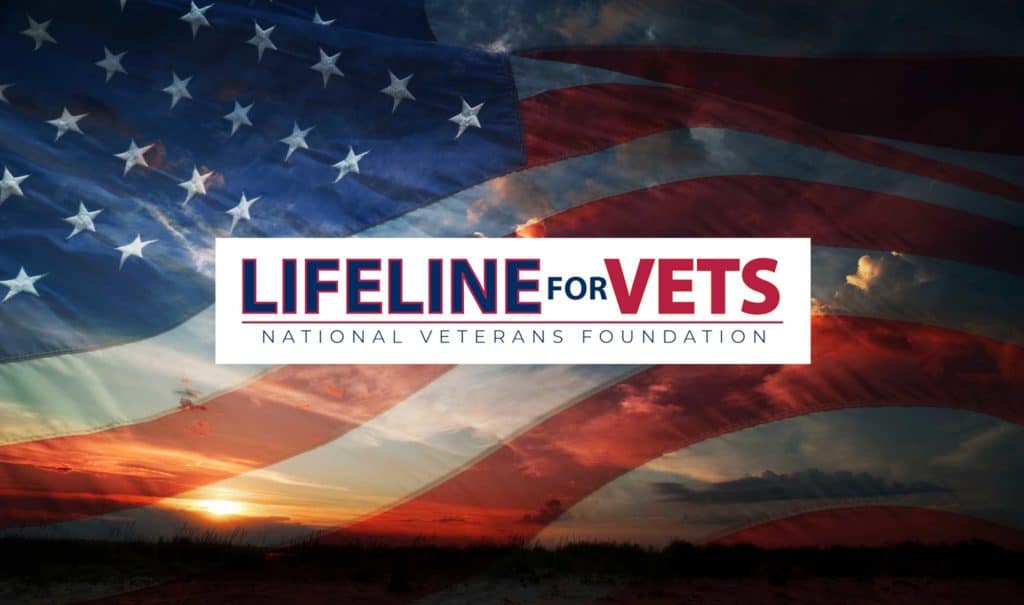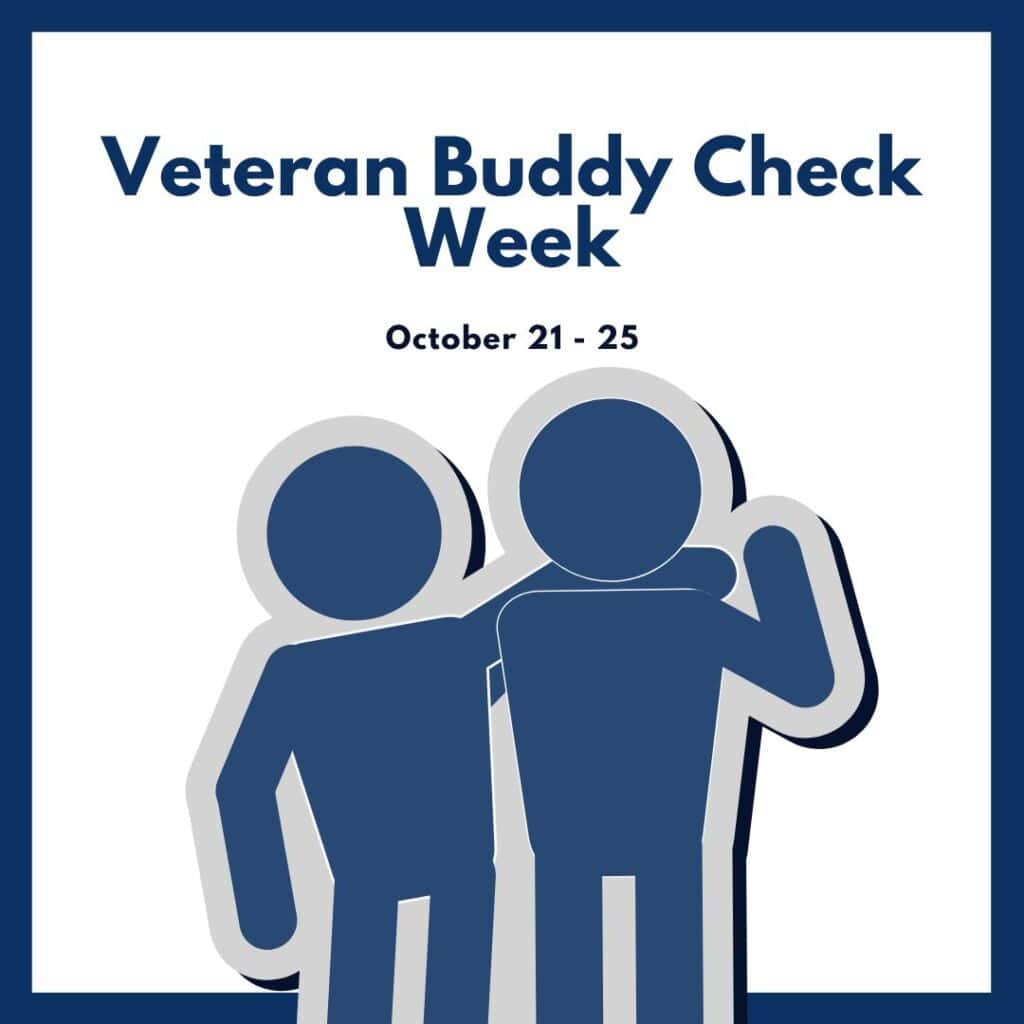Veterans Day 2017 Stories from the Lifeline for Vets
 When Veterans call our Lifeline for Vets™ – 888-777-4443 they need someone to talk to, someone who understands, someone they can trust. They reach another veteran of America’s armed forces. Speaking to another veteran who “gets it” is crucial for a soldier who has returned to the homeland he or she has defended only to feel like “a stranger in a strange land” – full of fear, wracked with depression and on the verge of despair.
When Veterans call our Lifeline for Vets™ – 888-777-4443 they need someone to talk to, someone who understands, someone they can trust. They reach another veteran of America’s armed forces. Speaking to another veteran who “gets it” is crucial for a soldier who has returned to the homeland he or she has defended only to feel like “a stranger in a strange land” – full of fear, wracked with depression and on the verge of despair.
The NVF and the Lifeline for Vets™ – 888-777-4443 – have helped countless American heroes — person-to-person, veteran-to-veteran. That’s vital at a time when suicides among America’s veterans have reached the rate of 22 a day. Over and again, Lifeline for Vets™ and its volunteer professionals have talked veterans back from the brink of taking their own lives. Over the past 32 years we have answered more than a quarter million calls and every day there are more and more. Below are just a few calls we’ve received in the last few months.
Home, Sweet Home
 They had been married 44 years when she died last November. With her loss, all his support systems dissolved. She had handled everything — the house, their finances, his care. A 70-year-old Vietnam veteran, he’d been in ‘Nam 1965-68. A neurological condition disabled him so he couldn’t walk. Not surprisingly, he went into a major depression.
They had been married 44 years when she died last November. With her loss, all his support systems dissolved. She had handled everything — the house, their finances, his care. A 70-year-old Vietnam veteran, he’d been in ‘Nam 1965-68. A neurological condition disabled him so he couldn’t walk. Not surprisingly, he went into a major depression.
His wife’s name was on the car and the mortgage. He was named on the deed, but not on the mortgage. Shortly after her death, their car was repossessed. Then they came for the house.
He’d called the mortgage company when he was 2-3 months in arrears, but they wouldn’t talk to him because he was not named on the loan. He offered to make payments but they wouldn’t accept them. Again because he wasn’t on the loan. Angry and frustrated, he swore at them that the only way he’d leave his home was in a body bag.
The foreclosure auction was scheduled to start the next morning at 10AM. He called the NVF’s Lifeline for Vets. He’d been crying but he got clearer as he talked to Shad. “I’m not leaving. I’ll put both barrels of my shotgun in my mouth and pull the trigger.”
Shad’s years of handling crisis calls kicked in. “Let’s work on this,” he said. “We’ve got your back.” The vet put the gun down. “Now break it down,” Shad coaxed. “We’re on your team.” They began talking about Vietnam. Vet to vet. Finally he was able to say, “So now we have to find out how bad the situation is. Who are these people?” At that point the NVF double-teamed for this vet in crisis.
Women Outreach Director Mary Ann Mayer, also a trained social worker, got the name of the mortgage company and the law firm handling the foreclosure from Shad. Working with the vet, she was able to get third party authorization so they would talk to her. At any step, she knew, the process could crumble.
With Shad still on the phone with the vet, Mary Ann called the local VFW, 48 miles away, and found a Vietnam vet who ran peer-to-peer support. She asked him to drive to the suicidal vet’s house immediately. He’d get there as quickly as he could, he promised, but it would be two hours because his wife had the car.
They were down to a few hours. Two hours later Mary Ann called the vet to let him know another Vietnam vet was coming out to speak to him. “That must be him on the porch. He’s wearing a Vietnam cap,” the vet told her.
The veteran from the VFW stayed four hours, during which Shad and Mary Ann were on the phone working on things. Shad, on the phone with the vet and Mary Ann working with the mortgage company and the law firm. They stayed in touch by text.
On the second day, the vet saw two men skulking around the house. He assumed it was about the foreclosure and he ran them off. But the auction went ahead at 10AM. The house sold within five minutes on the courthouse steps.
Overall, the process would go on for three days as Mayer worked her way up the chain at the mortgage company’s Consumer Escalation Dept., who hung up on her. Simultaneously she worked her way up the law firm until she got to a partner.
We don’t give up. Mayer got to the managing partner of the law firm. She described the suicidal vet, decorated and wounded. “This is when I hate my job,” he said. Mayer asked him if he had vets in his family. He answered, “We did some work with Homes for Heroes.” She had him.
She checked in with the vet who thanked her. She told him his daughters, who knew nothing about the situation, needed him. She knew the house had been sold, he didn’t. She contacted legal aid. During that time the buyer had come by and been run off, threatened by the veteran. The buyer returned with an envelope ordering the vet off the property in thirty days. The envelope proved empty.
Shad was back on the phone with him. “Don’t let us down…let us work on it.”
On the third day, a break. The law firm had not been given the correct information from the mortgage company. If they had, they would never have taken the case. The mortgage company had been told of the wife’s death but failed to inform him that he could take the death certificate to the courthouse to transfer the house into his name. His adult daughters would have four years to transfer the home to their names. Without that information, the grieving vet sat in the house depressed and wanting to shoot himself.
Now, even though the sale had taken place, the lawyers rescinded the foreclosure sale and refunded the money to the buyer. When Mary Ann called to tell the Vet, he got too quiet. “Honey, why are you telling me that.” Because it’s the truth, she said.
From there, the vet received the legal advice he needed to save his home. All the steps. His new buddy from the VFW is doing the legwork to get him to the VA for medical care, liaising with his primary physicians, and someone’s been contacted to come clean the house. A VSO (Veterans Service Officer) is working to increase his disability level to 100%, and a visiting nurse comes by once a week. She’s paid for by the VA.
During the process, the NVF had reached out to the nearest Vet Center, the nearest VFW where we found a caring Vietnam vet, the mortgage company, the law firm and a raft of legal aid providers. In Mayer’s mind, the whole thing shifted when she established a connection with the law firm. Proof, she says, of the power people can have when they engage in a common goal.
Section 8
 An OEF/OIF veteran from California called in distress. He was in danger of losing his HUD VASH (Veterans Affairs Supportive Housing) apartment because his utilities were going to be shut off. Under Section 8 if utilities are not paid, tenants can be evicted. He and his wife, both disabled, had an 11-month-old child. Their utility bill, normally around $80 per month, jumped to $394 in July’s heat wave. They ran the AC during the heat because of the baby. The vet was navigating the last stages of medical review for service connected benefits, but until those benefits were in place, the family depended on the wife’s disability payments. Out of the $989 per month she received, their portion of the rent was $387. Not much was left for food and utilities.
An OEF/OIF veteran from California called in distress. He was in danger of losing his HUD VASH (Veterans Affairs Supportive Housing) apartment because his utilities were going to be shut off. Under Section 8 if utilities are not paid, tenants can be evicted. He and his wife, both disabled, had an 11-month-old child. Their utility bill, normally around $80 per month, jumped to $394 in July’s heat wave. They ran the AC during the heat because of the baby. The vet was navigating the last stages of medical review for service connected benefits, but until those benefits were in place, the family depended on the wife’s disability payments. Out of the $989 per month she received, their portion of the rent was $387. Not much was left for food and utilities.
The veteran had spent two weeks trying to find assistance, with no luck. The pressure of facing eviction along with the stress of not being able to provide for his family activated his PTSD. The NVF counselor tackled the problem for him. It took her 2.5 days to put together a solution, getting funds from the local American Legion chapter and a community based service agency. With the utilities paid, she linked the veteran to a low-cost utility program so that he doesn’t get into this situation again.
Sleeping in Her Car
In early August, a concerned friend called about a homeless female Veteran in Florida. A widow, she had been sleeping in her car with her kids for three weeks, and working as an Uber driver for groceries and other necessities. After the death of her husband she had battled a short bout of depression in addition to PTSD and MST from her service in the US Army. Counselor Greg Flowers gave the caller information about the Supportive Services for Veteran Families (SSVF) program. Neither the veteran nor her friend knew that such a program existed.
The non-profit organization that administers the program where the family lives was able to help them immediately by providing hotel vouchers while they waited for their new home. Greg received a thank you note from the friend telling how grateful she was for the information. Several weeks later the Veteran herself called to thank Greg and the National Veterans Foundation for all that we do. She said she and her children were enjoying their new home and furniture, provided by the SSVF program.
Need A Ride
 A disabled World War II Veteran called needing a ride to the VA. He was already getting treatment at the nearest VA hospital, but he couldn’t drive and was frustrated by not being able to get a ride to his appointments. NVF Counselor Richard Chiamulon got busy and discovered that his VA hospital had their own transportation service. The hospital was reluctant to let Richard intercede, but in the end, they allowed us to make the connection to help. Now the vet has the correct number and contact person to set up his own transportation for future appointments.
A disabled World War II Veteran called needing a ride to the VA. He was already getting treatment at the nearest VA hospital, but he couldn’t drive and was frustrated by not being able to get a ride to his appointments. NVF Counselor Richard Chiamulon got busy and discovered that his VA hospital had their own transportation service. The hospital was reluctant to let Richard intercede, but in the end, they allowed us to make the connection to help. Now the vet has the correct number and contact person to set up his own transportation for future appointments.
You can be a part of our mission to help Veterans by making a tax-deductible donation!
About the Author
SUBSCRIBE TO OUR BLOG AND NEWS!
By submitting this form, you are granting: NATIONAL VETERANS FOUNDATION INC permission to email you. You may unsubscribe via the link found at the bottom of every email. (See our Email Privacy Policy for details.)
Related Posts




